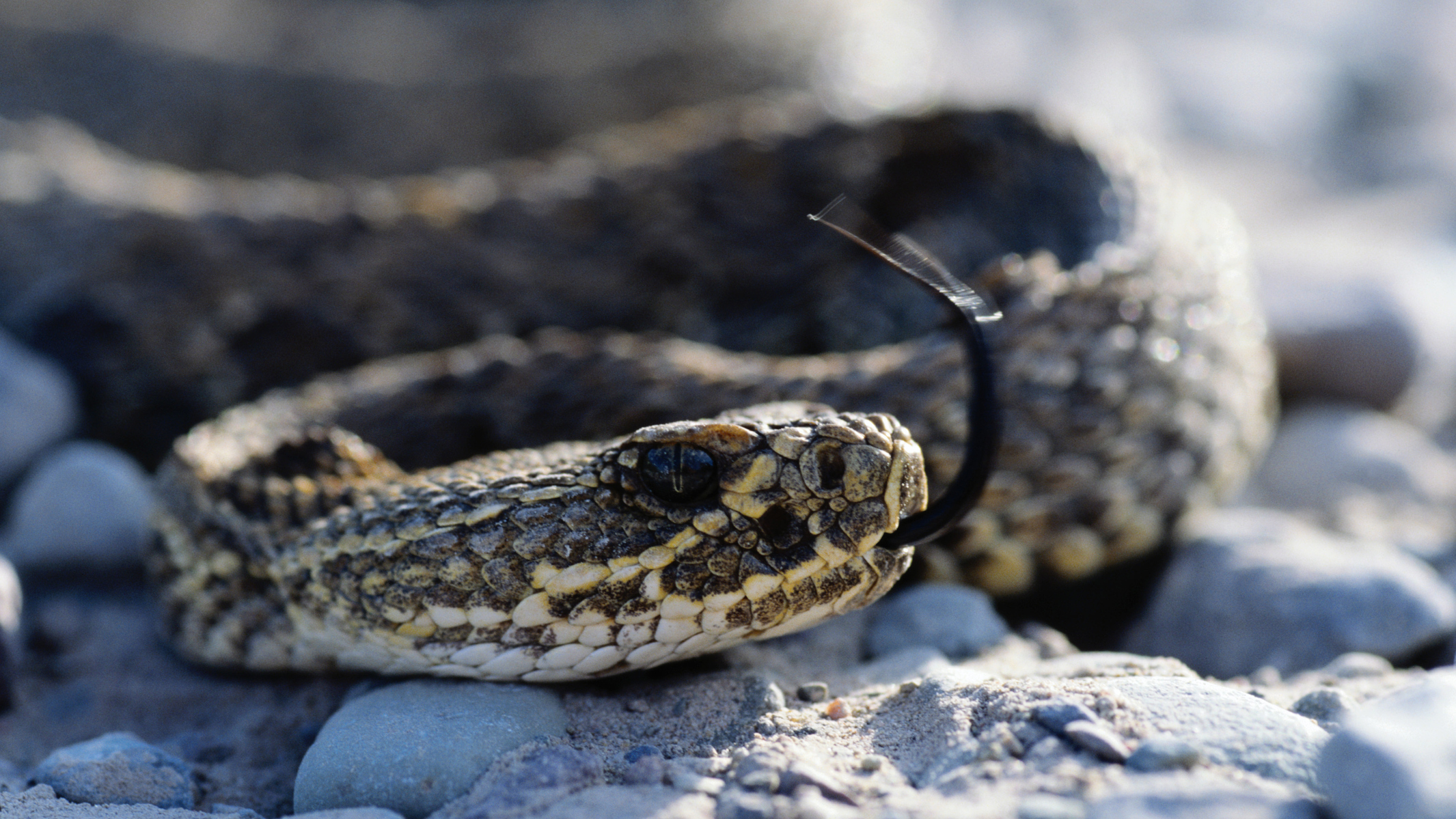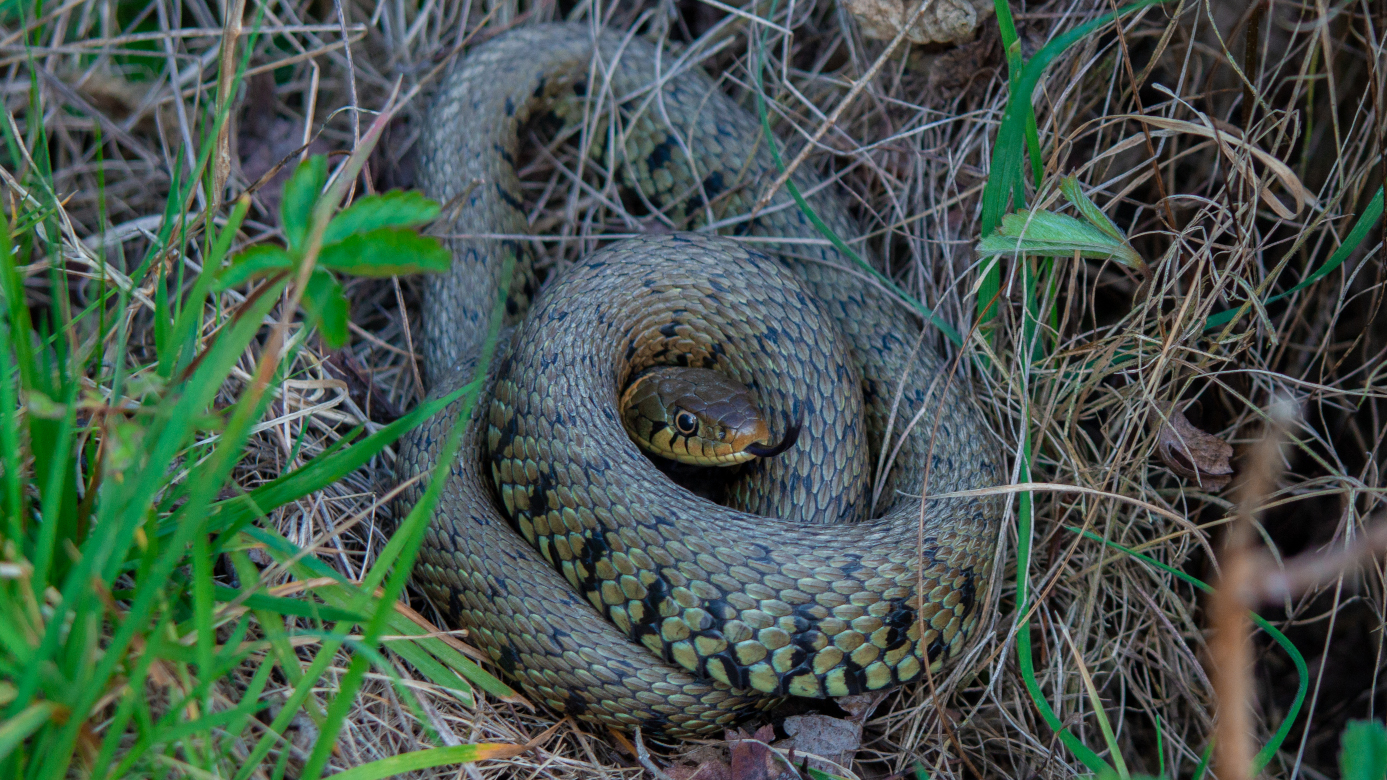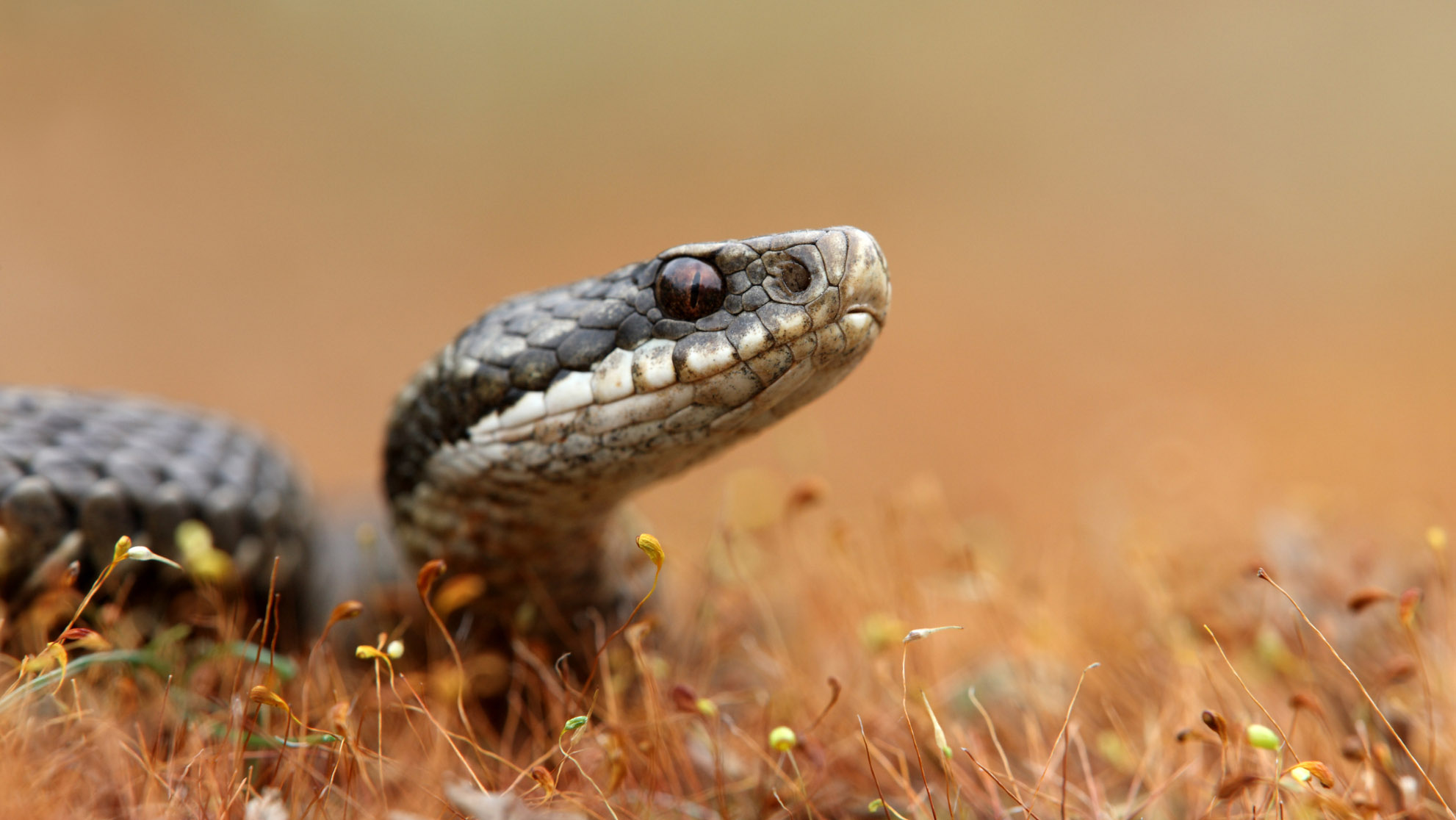What to do if you see a snake on a trail: our expert safety guide
Knowing what to do if you see a snake on the trail could be the difference between walking away from a memorable encounter and finding yourself in a life-threatening situation

Several years ago, I was in the first few minutes of a run along Mesa Trail in Boulder, Colorado, and I was startled by the sight of a massive snake lying motionless just off the trail.
Surprisingly, my unleashed dog had run past it without seeing or sensing it, but the moment I saw the snake, no more than three feet from the tip of my trail running shoes, I jumped back. As I scurried to leash my dog, the snake started to coil up, raise its head and rattle its tail. Yup, it was a crotalus viridis, otherwise known as a prarie or western rattlesnake.
Even though they’re only aggressive in defense, rattlesnakes are one of the more dangerous and threatening critters you can encounter out on a trail.
I backed away slowly with my dog, who was still oblivious to the danger just a few strides away. The snake continued to coil into a position in which I knew it could powerfully lunge and strike if it was so inclined. I didn’t want any part of that, so I continued to back away and was physically and mentally relieved when I was about 20 feet (6.5 yards) away and could continue on my run.
But did I do the right thing? And do you know what to do if you see a snake on a trail?
Meet the expert

Colorado-based Brian is a passionate adventurer who loves all things hiking, camping, skiing, climbing and running in the backcountry. He shares his native state with ten native snake species, so he knows exactly what to do if he encounters one.
Today's best deals
What to do: the expert advice
- Always keep three to four feet away from a snake
- Back away and wait for it to move away on its own

I asked rattlesnake expert Mary Ann Bonnell, the visitor services manager for Jefferson County Open Space near Denver, what to do if you see a snake on a trail.
“I always assume I’m dealing with an athletically gifted snake, so I give them three to four feet,” she told me. “I always want to err on the side of caution.”
If you encounter a snake while hiking or running on a trail, it’s best to back away and wait for it to move away on its own — especially if it’s a venomous serpent like a rattlesnake. If you can identify the type of snake, that can help you understand how dangerous it might be. Some snakes — like common garter snakes and milk snakes — are completely harmless. However, other snakes, like a bullsnake or gopher snake, are also harmless but are the same size, shape and color as their more dangerous rattlesnake cousins and some even hiss and shake to mimic the actions of rattlesnakes.
All the latest inspiration, tips and guides to help you plan your next Advnture!

- NEVER throw rocks at it or prod it with a stick
- Wear high cut hiking boots and long pants, as the most common place for a rattlesnake to strike is the inner ankle area
And that’s why, no matter what type of snake you think is in front of you, the best thing to do is back away slowly, says Dan O’Connell, a North American snake expert from Arlington, Texas. Do not throw rocks or prod it with a stick, because that will make it angry and want to strike, he says. And when a rattlesnake is agitated, he adds that’s when it can strike the farthest and release the most venom.
To avoid being bitten by a snake, Bonnell recommends wearing high-top hiking boots and long hiking pants when hiking in rattlesnake habitat because the most common place for a rattlesnake to strike is the inner ankle area. As a rule of thumb, Bonnell said the strike distance of a rattlesnake is two-thirds of the length of its body. Prairie rattlesnakes are usually 3 to 4 feet long (about 1-1.25 meters), which means the best course of action is to put a distance of at least a few large steps between you and the snake as soon as you see it.
The odds of being bitten

- 7,000 to 8,000 people are bitten by snakes in the US annually
- Around 5 of these typically result in a fatality
- The venomous snake species in North American and Europe very rarely pose fatal threats to humans
According to the Centers for Disease Control and Prevention, of the 7,000 to 8,000 people bitten by snakes in the U.S. every year, only about five result in fatalities. Rattlesnakes, water moccasins and copperhead snakes are responsible for the overwhelming majority of venomous snake bites in the U.S. While there are fewer snake species found throughout Europe, there are venomous snakes such as adders in the UK and a variety of vipers throughout central, eastern and southern Europe.
Every region of North American and Europe has different species of snakes with different habits based on the weather. In Colorado, for example, rattlesnakes typically venture out onto the trails in the springtime after cold morning temperatures and occasional April snow showers have dissipated.
Fortunately, the venomous snake species in North American and Europe very rarely pose fatal threats to humans, which means there is absolutely no need to be aggressive with a snake on the trail, venomous or not. Moving around the snake, even if in the middle of the trail, is always your best option.

- Most bites occur when people attempt to kill or move a snake
No matter where you are or what type of snake you encounter, it’s important to realize that most snake bites occur when people try to move or kill a snake, O’Connell says. The closer you get, the more likely you are to suffer a bite.
“Most snake bites occur when a snake is handled or accidentally touched by someone walking or climbing,” he says. “When in doubt, try to stay away from any snake you encounter.”
Although most snakes are not aggressive and will slither away at the first hint of human presence, people should still take precautions to lessen the chance of being bitten – particularly in wooded areas around lakes or ponds.
How to mitigate the risk
Here are some tips to help reduce the risk of incurring a venomous snake bite:
- Use the buddy system when walking or running on trails near wooded areas.
- Do not step or put your hands where you cannot see.
- Wear over-the-ankle boots, thick hiking socks and long loose pants, especially when venturing off of heavily used trails. Take a look at our guide to the best hiking socks for some good options.
- Consider buying a pair of snake gaiters for hiking.
- Tap ahead of you with trekking poles before entering an area where you can't see your feet. Snakes will try to avoid you if given enough warning.
- When possible, step on logs and rocks, never over them as you may surprise a sheltering snake.
- Avoid walking through dense brush or blackberry thickets.
- Be careful when stepping over a doorstep. Snakes like to crawl along the edge of buildings where they are protected on one side.
- Avoid wandering around in the dark. If you are out at night, always use a flashlight, because most snakes are active on warm nights.
- NEVER try to pick up a snake, even if it appears to be dead. Not only do some snakes lie flat and motionless, a snake's reflexes can still cause the snake to strike up to an hour after it has died.
- If you see a snake on the trail, give it the right of way. Do not attempt to kill the snake, just move out of the snake's way.
- If you hike often, consider buying a snake bite kit – available from hiking supply stores. Do not use older snake bite kits, such as those containing razor blades and suction bulbs, as these have been proven to be ineffective.

What to do if you are bitten
- If bitten, get to a medical facility as quickly as possible
Despite taking all safety precautions, the threat posed by snakes can never be completely eliminated, so it is a good idea to have a plan for what to do in the event that you, your child, or a buddy is bitten by a snake.
When it comes to treating a venomous snake bite, the most important thing to do is get to a medical facility as quickly as possible. Call the local land agency manager or park ranger office.
While waiting for help, you might call the National Poison Control Center at (800-222-1222) and administer the following first aid measures:
- Keep the bite victim calm, reassuring them that bites can be effectively treated in an emergency room. Restrict movement. Immobilize the site and keep it below heart level to reduce the flow of venom.
- Remove any rings or constricting items because the affected area may swell. Create a loose splint to help restrict movement of the area.
- Bring in the dead snake only if this can be done safely. Do not waste time hunting for the snake, and do not risk another bite if it is not easy to kill the snake. Be wary of the head when transporting it – a snake can actually bite for up to an hour after it's dead.
- If you have a pump suction device (such as the Sawyer Products Venom Extractor & Suction Pump Kit), follow the manufacturer's instructions to try to retract or slow the immersion of the venom.
What not to do
- Do not allow a snakebite victim to become overexerted. If necessary, carry the person to safety.
- Do not apply a tourniquet.
- Do not apply ice or cold compresses to the bite.
- Do not cut into a snake bite with a knife or razor.
- Do not try to suck out the venom by mouth.
- Do not give the bite victim stimulants or pain medications (including aspirin) unless a doctor tells you to do so.
- Do not give the bite victim anything by mouth.
- Do not raise the site of the bite above the level of the person's heart.
Brian is an award-winning journalist, photographer and podcaster who has written for Runner’s World, The Times, Outside, Men’s Journal, Trail Runner, Triathlete and Red Bulletin. He's also the author of several books, including Kicksology: The Hype, Science, Culture and Cool of Running Shoes. He lives in Boulder, Colorado, and loves to run, bike, hike, camp, ski and climb mountains. He has wear-tested more than 1,500 pairs of running shoes, completed four Ironman triathlons, as well as numerous marathons and ultra-distance running races.
